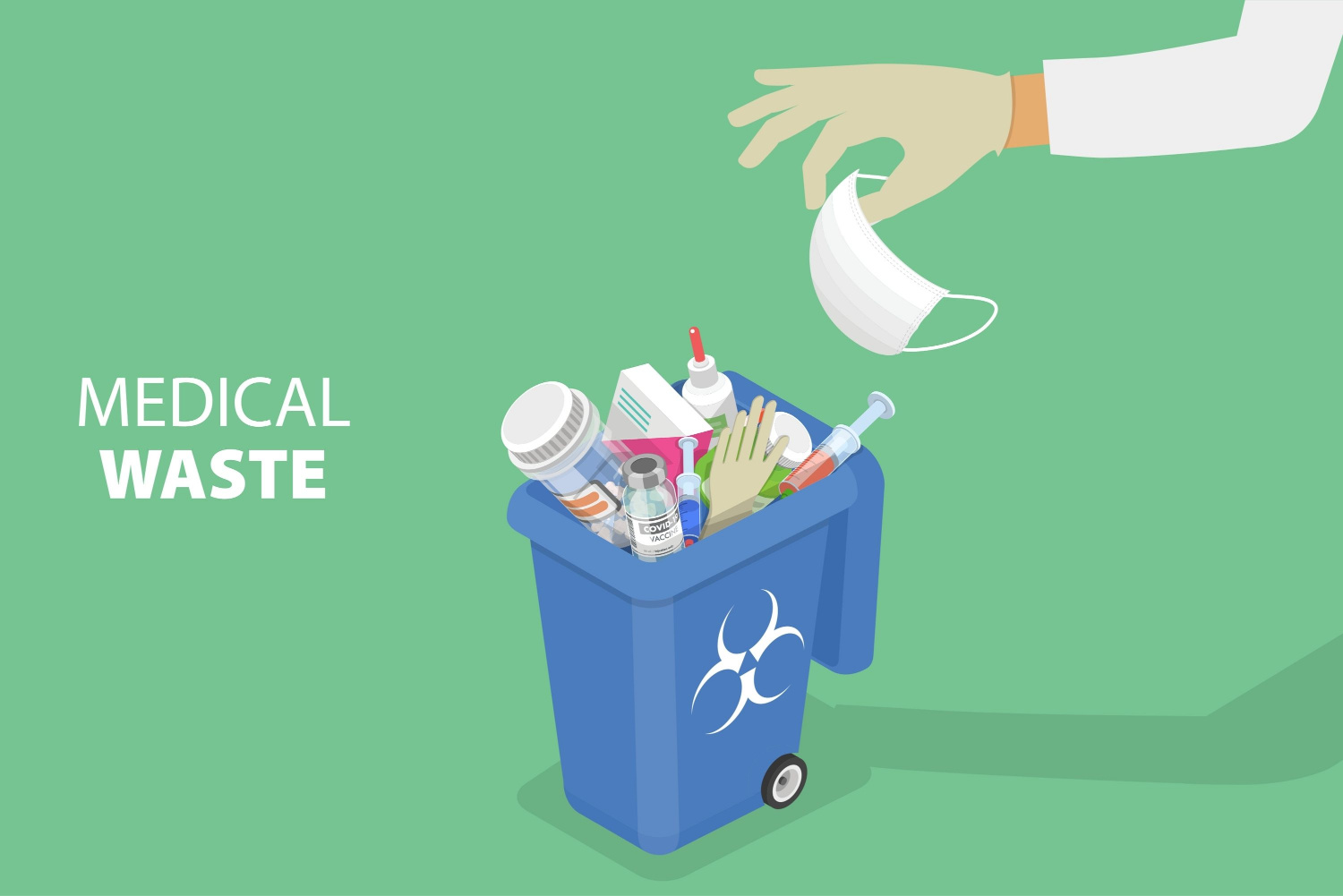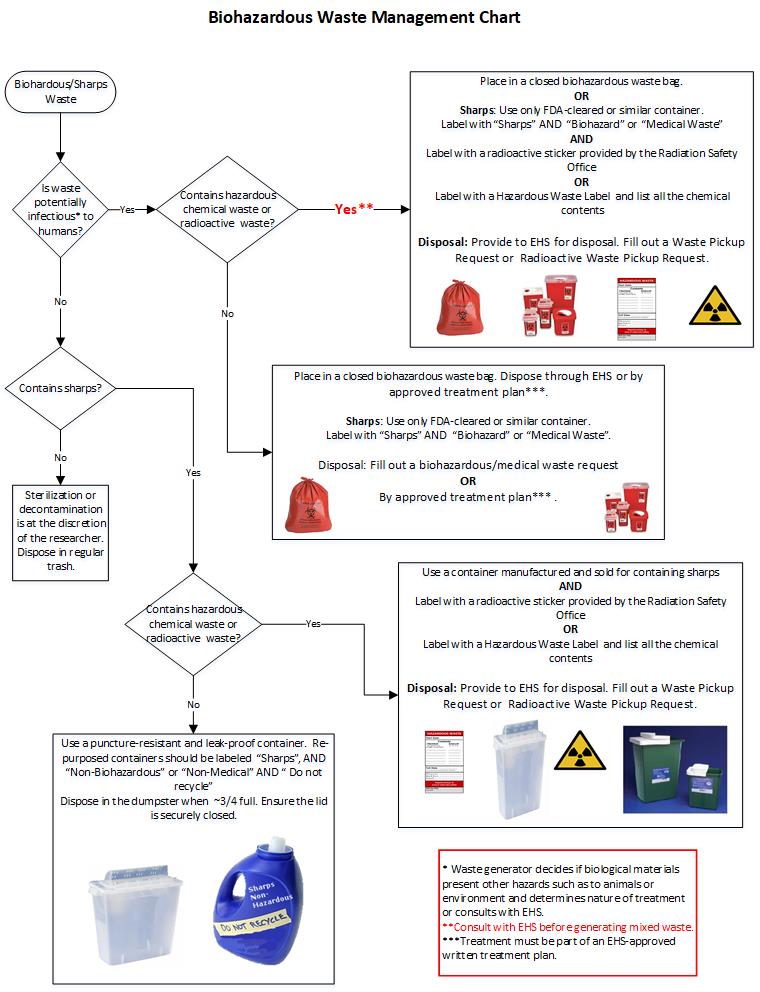Compliance and Rules for Medical Waste Disposal
Compliance and policies for clinical waste disposal play a critical role in ensuring the security and wellness of both health care experts and the general public. Proper monitoring of clinical waste is important to avoid the spread of infections, protect the environment, and maintain public health and wellness. These regulations encompass various facets, consisting of the category and partition of clinical waste, proper storage space and dealing with procedures, as well as transportation and disposal techniques.
Importance of Conformity
The importance of conformity with regulations for clinical garbage disposal can not be overstated. Correct disposal of clinical waste is crucial for ensuring the safety and wellness of medical care workers, people, and the public. Medical waste, that includes products such as utilized needles, contaminated gloves, and biomedical waste, can posture serious health dangers if not taken care of and thrown away appropriately.
Compliance with policies makes certain that medical waste is managed in a manner that minimizes the possibility for exposure to transmittable diseases and dangerous substances - medical waste removal service. It helps stop the spread of infections, such as HIV, liver disease B and C, and various other bloodborne microorganisms. Conformity also plays an essential function in safeguarding the environment by avoiding contamination of water sources, dirt, and air
Failure to abide by guidelines can lead to serious consequences for health care centers, including penalties, lawsuit, and damages to their track record. Additionally, non-compliance may endanger the health and wellness of health care employees, individuals, and the area.
Conformity with policies for medical waste disposal requires adherence to certain standards and procedures. These may include appropriate partition, product packaging, labeling, and storage space of medical waste. It additionally entails making use of approved disposal approaches, such as incineration, landfilling, or autoclaving, depending on the kind of waste.
Governing Agencies and Bodies
Regulatory firms and bodies play an essential function in looking after compliance with regulations for medical garbage disposal. These organizations are in charge of setting guidelines, standards, and protocols to make sure the proper and safe handling of medical waste. They apply and keep track of conformity to safeguard public wellness and the atmosphere.
One of the most popular regulative firms in the United States is the Environmental Security Company (EPA) The EPA is liable for managing the storage space, transportation, treatment, and disposal of clinical waste. They establish standards for waste generators, carriers, and therapy centers to comply with, making certain that all essential safety measures are taken to prevent the spread of diseases and contamination.
Another important regulatory body is the Occupational Safety And Security and Health Management (OSHA) OSHA establishes laws and requirements to protect workers from work-related threats, including those related to clinical waste. WasteX Medical Waste Disposal. They give guidelines for the secure handling and disposal of clinical waste to shield workers in health care facilities
Along with these federal firms, individual states also have their very own regulatory bodies that supervise clinical waste disposal. These companies may have their very own particular laws and demands that have to be followed.

Classification and Partition of Clinical Waste
To guarantee appropriate administration of clinical waste, it is vital to categorize and segregate it according to established protocols and guidelines. medical waste disposal. Category and segregation play an essential duty in minimizing the threat of infection, safeguarding the environment, and ensuring the security of medical care workers and the public
Medical waste is categorized into different classifications based on its potential threat level. These categories consist of contagious waste, pathological waste, sharps waste, pharmaceutical waste, chemical waste, and radioactive waste. Each group needs specific handling, storage space, transport, and disposal approaches to decrease the threat of exposure and contamination.
Segregation of clinical waste involves dividing different kinds of waste at the source. This process guarantees that waste with different risk levels is not blended, lowering the capacity for cross-contamination and making disposal treatments extra reliable. Appropriate partition is attained with the use of color-coded labels and containers, which help healthcare workers and waste administration personnel recognize and handle each type of waste correctly.
In addition to classification and segregation, medical care centers need to likewise abide by local, state, and federal guidelines concerning medical waste management. These laws outline certain requirements for storage space, transportation, treatment, and last disposal of clinical waste, making certain conformity and maintaining public health and wellness and safety and security.
Appropriate Storage and Handling Treatments
Appropriate storage and handling procedures play an important WasteX Medical Waste Disposal role in ensuring the safe and certified management of clinical waste. Clinical waste, which consists of items such as utilized syringes, contaminated gloves, and ended medicines, can present serious health and wellness and environmental threats otherwise dealt with properly. As a result, it is critical for healthcare centers and various other generators of clinical waste to implement stringent storage and dealing with protocols.
To start with, clinical waste must be stored in long lasting, watertight containers that are particularly made for this purpose. These containers should be classified with the universal biohazard sign and the words "clinical waste" to clearly show the contents. Additionally, the containers need to be maintained securely near protect against any kind of possible leakage or splilling.
In addition, it is necessary to set apart different kinds of medical waste to stop cross-contamination. Sharps, such as scalpels and needles, must be kept in puncture-resistant containers to reduce the danger of injuries - WasteX Medical Waste Disposal. Chemical waste, such as solvents and disinfectants, should be stored separately from other kinds of medical waste to protect against harmful direct exposures or chemical responses

Transportation and Disposal Approaches
Healthcare centers should ensure the risk-free transportation and proper disposal of their clinical waste to abide by policies and shield public wellness. Transportation and disposal approaches play a vital function in stopping the spread of infectious diseases and reducing the ecological impact of medical waste.
To deliver clinical waste, medical care facilities need to utilize watertight and puncture-resistant containers that are labeled with the biohazard icon. These containers need to be safely secured to prevent any type of leak during transport. In addition, medical care centers should establish protocols for the transportation process, including using specialized lorries and experienced personnel.
As soon as the clinical waste reaches the disposal center, it undertakes numerous methods of therapy. One typical method is incineration, which involves melting the waste at high temperature levels to destroy microorganisms and minimize the quantity of waste. One more method is autoclaving, which makes use of steam and stress to sterilize the waste. After treatment, the waste is generally sent to a garbage dump or a waste-to-energy facility for last disposal.
It is crucial for healthcare centers to function with qualified and allowed waste management companies to ensure appropriate transport and disposal of medical waste. These business have the competence and sources to take care of medical waste securely and in compliance with guidelines.
Final Thought
In conclusion, compliance with policies for medical waste disposal is of utmost significance to guarantee public health and safety and security. On the whole, adherence to compliance and guidelines is necessary to successfully manage clinical waste.
Medical waste, which consists of products such as used needles, contaminated gloves, and biomedical waste, can pose major health risks if not handled and disposed of appropriately.
These classifications consist of infectious waste, pathological waste, sharps waste, pharmaceutical waste, chemical waste, and radioactive waste.Partition of medical waste entails dividing different types of waste at the resource. Proper partition is achieved through the usage of color-coded labels and containers, which help medical care workers and waste monitoring employees identify and take care of each type of waste properly.
Chemical waste, such as disinfectants and solvents, need to be kept independently from various other kinds of clinical waste to stop dangerous direct exposures or chemical reactions.